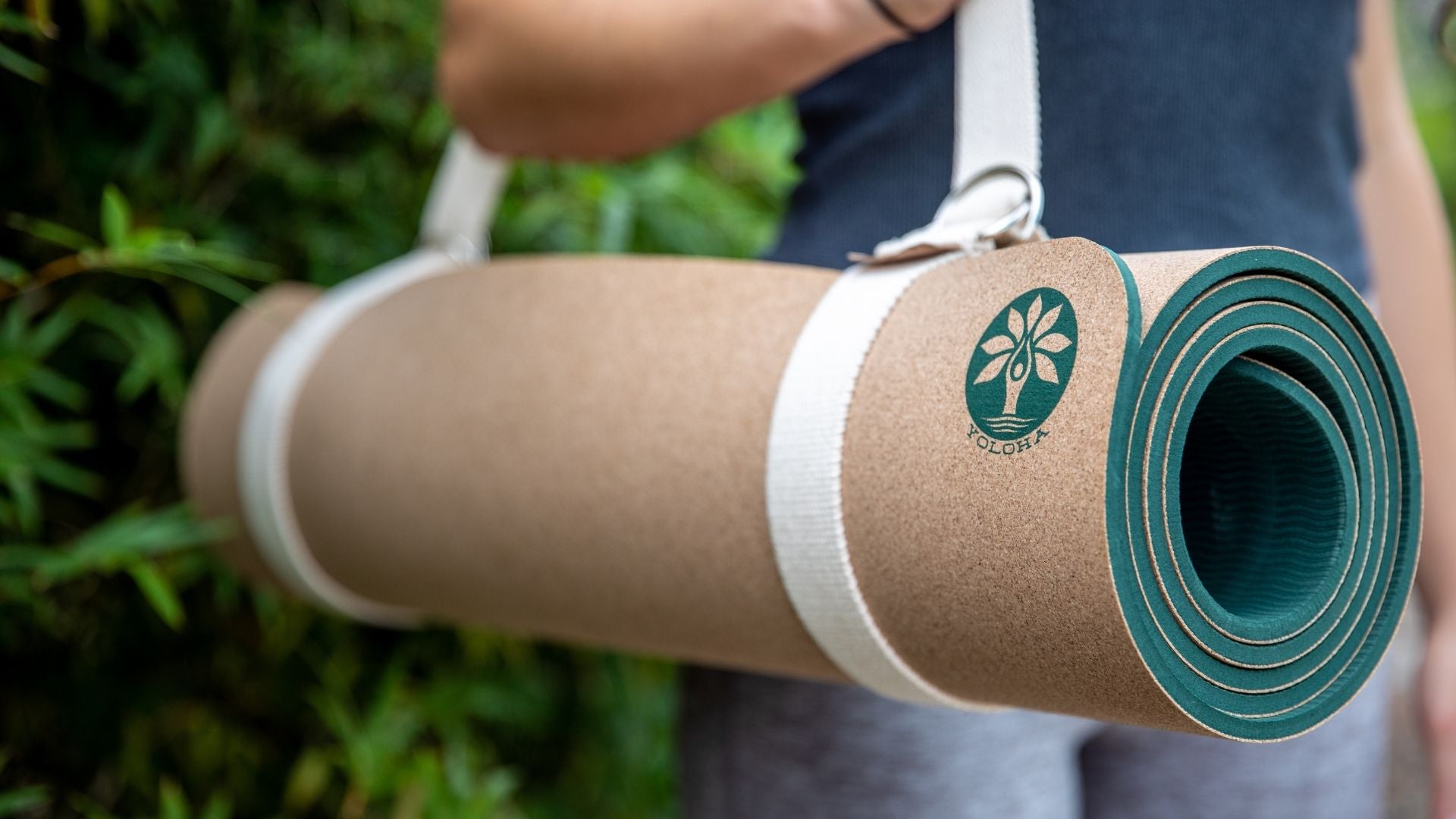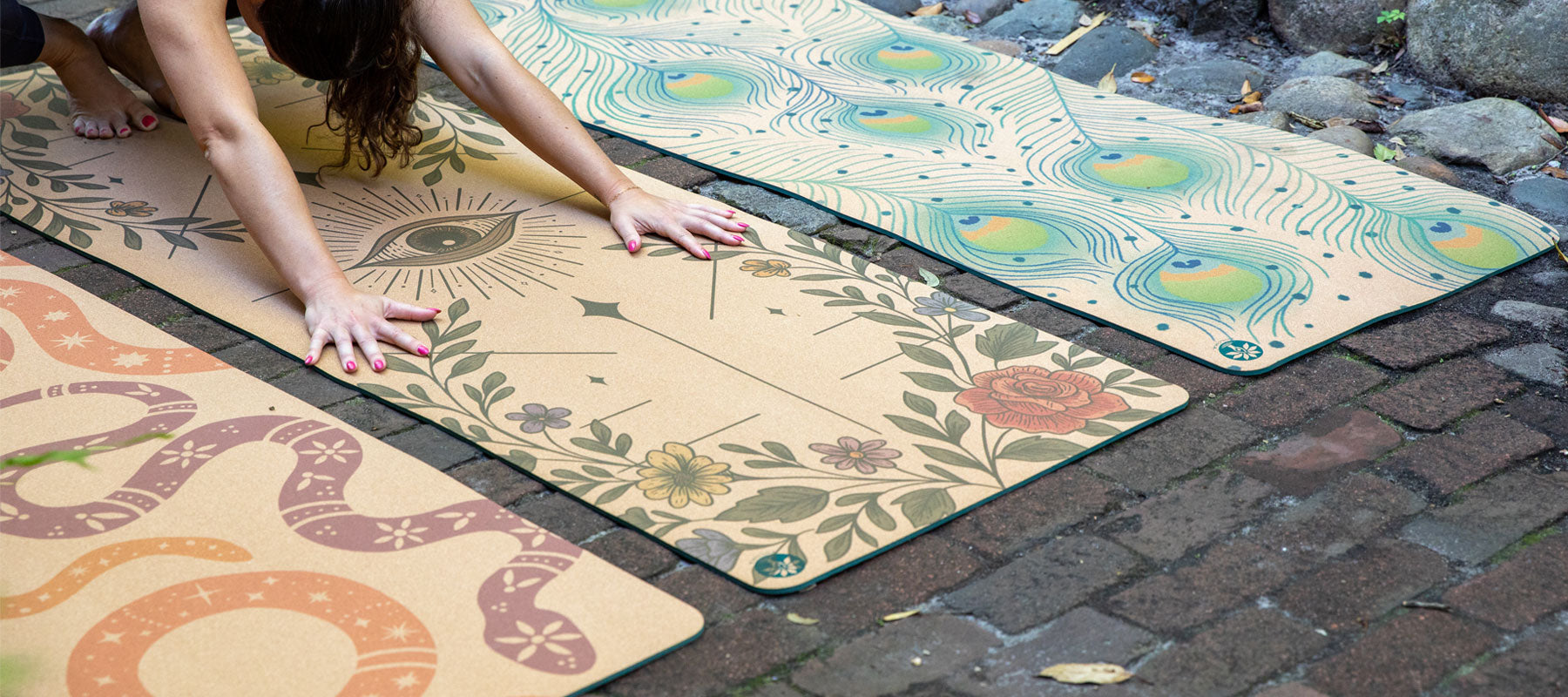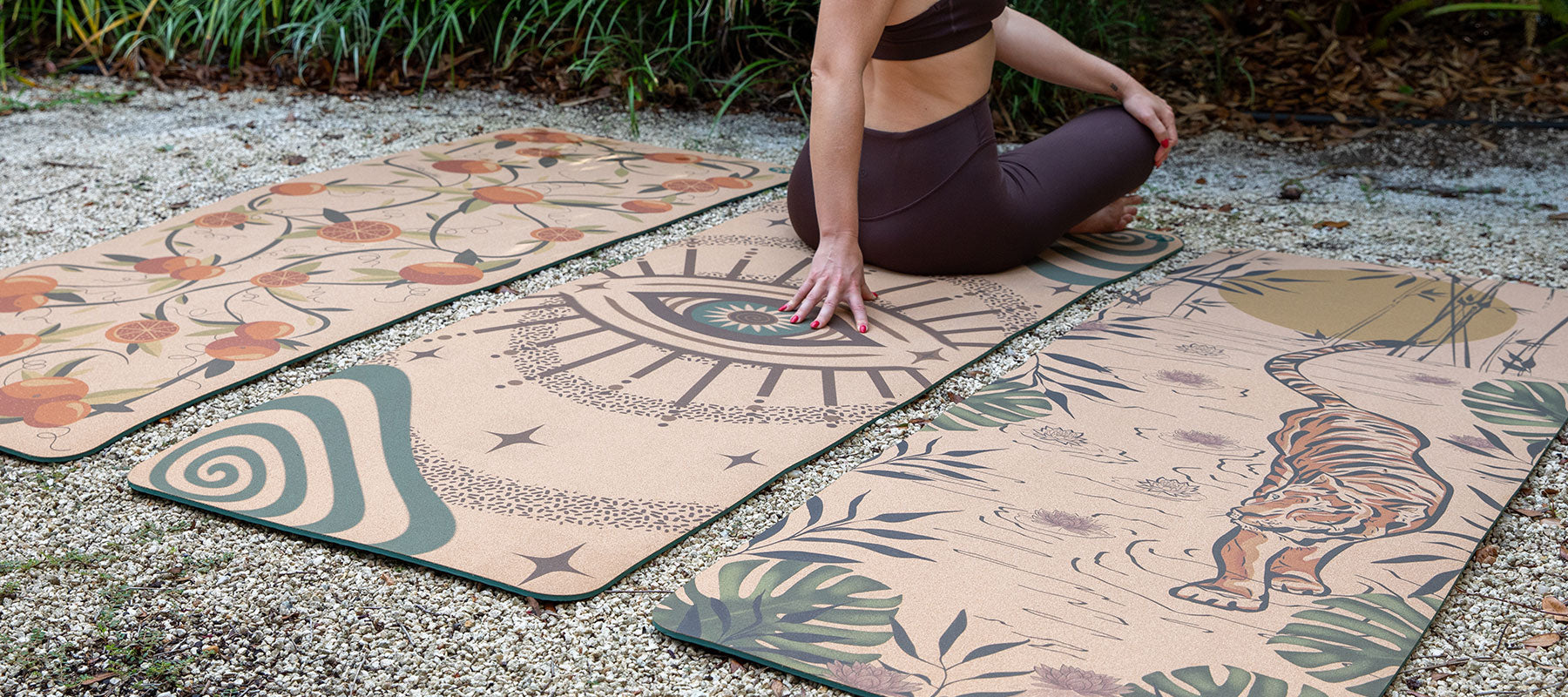7 years ago, Yoloha Founder Chris Willey sat down in his garage, thought outside the box and made a yoga mat out of the most sustainable materials he had on hand. By combining cork with recycled rubber, Chris created the world’s first cork yoga mat.
The mat was more than just an eco-friendly alternative to the traditional yoga mat. It was naturally high performing with impeccable grip and antimicrobial properties. It was then and there that Yoloha Yoga was born with the mission of bringing sustainable movement to people all around the world.
Never forgetting the roots of our brand, we have remained dedicated to reducing our environmental impact through constant innovation of our products, materials and methods. On top of our more obvious uses of cork, this has consisted of using recycled/recyclable packing materials (mainly paper and cardboard) with no single use plastics, making or assembling many of our products here in the USA, and partnering with carbonfund.org to offset our carbon footprint.
Now, we’re here to talk about our most recent (and most exciting) innovation: Plant Foam. This invention has led us to achieve a yoga mat made with up to 83% renewable materials. We are so proud of this step and offer total transparency of our development process as we move forward towards our goal of a 100% renewable yoga mat.
We sat down with Chris to answer any questions you may have about Plant Foam.
How was Plant Foam developed?
I have worked with and tested most foams on the market from Natural rubber, EVA, PU, etc. and I have found TPE foam to be the perfect blend of support, durability and weight. With that in mind I discovered Hexpol, a lead manufacturer out of Germany with a focus on sustainability. We quickly developed a great relationship and worked hard together for well over a year and a half to develop a foam almost identical to the properties of TPE using sugarcane from Brazil.

Why Make A Foam from Plants? Why not just recycle?
Recycling is super important to reducing our impact on our planet but It’s time for companies who produce products to think beyond recycling materials and move toward using ethically and sustainably sourced materials. The focus on recycling also creates a culture of guilt-free consumption, allowing people to feel they can consume more and more as long as they think what they’re consuming can be recycled. We can’t simply recycle more. We need to consume and produce more consciously.
What is Plant Foam made of?
From our year long trials we were able to achieve a foam made from sugarcane. We are not stopping there and are continuing to test our formula with Hexpol to achieve a 100% material base of renewable materials.

Where is Sugar Cane Farmed and how does this impact Deforestation?
Sugarcane used in Plant Foam comes entirely from the mills of Centre-South of Brazil. Hexpol has a close relationship with the farmers and mill workers to ensure zero tolerance towards deforestation, guaranteed by the independent international certifiers of RenovaBio. The producers do not cultivate sugarcane in the Amazon, Pantanal or Alto Paraguay River Basin biomes and they comply with the Sugarcane Agro Ecological Zoning developed by the Ministry of Agriculture, Livestock and Supply.
How does Sugar Cane farming impact the environment?
Crops used to create Plant Foam work to remove more greenhouse gases from the atmosphere as they grow. 95% of the water utilized by a typical sugarcane mill is treated and re-used, minimizing water usage. Sugarcane fields contribute to healthier soils by limiting soil loss, due in part to the semi-perennial nature of sugarcane. The same plant grows back many times after harvest and is typically only replanted every five or six years.
What makes Plant Foam green?
Plant foam, like all other foams, is actually clear when produced. Therefore, we use a non toxic dye to bring some life to the mat.

What is the remaining 30% of the Yoga Mat?
This is our most frequently asked question, and rightfully so. The rest of the mat is made with Eva Foam (Ethylene vinyl acetate), which is BPA free and does not contain chlorides, heavy metals, phenols, latex and other toxic substances. It is a safer alternative to products that use PVC foams which often carry BPA and require plasticizers like phthalates. EVA is commonly used in everyday products like baby teethers, footwear, packaging and many other different applications. This is a huge step in the right direction as we move forward with our goal of creating a mat made with 100% renewable materials.
Why don’t you just use cork?
The foam adds cushion to the mat! Without it, it would just be a very hard surface. As can be seen on our Find Your Mat page, the surface of our mats vary by thickness. This determines the amount of foam used and the overall cushion level.
What’s next for Yoloha?
In the fall of 2021, we will have Plant Foam available on our Aura, Nomad and Original Air yoga mats. We are currently developing our highest performing yoga mat yet (Unity Pro) made from 83% renewable materials, set be released in the fall of 2024. From myself and all of us at Yoloha, we are forever grateful for all of your love and support as we continue our tradition of creating sustainable and innovative yoga products to help your practice.
-Chris & The Yoloha Family


